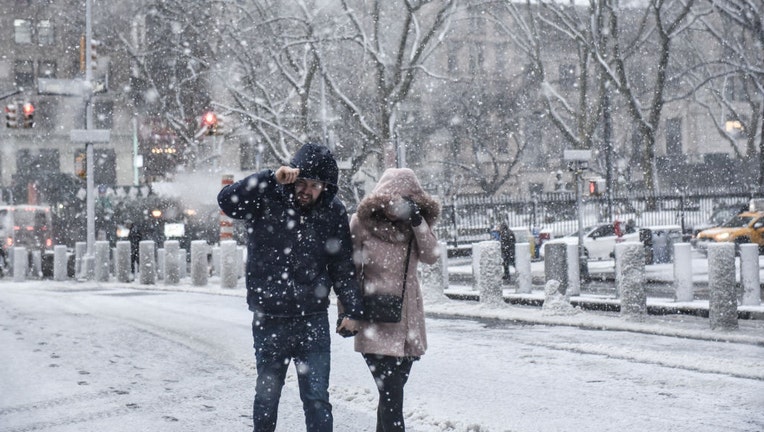Blizzard vs snowstorm: What's the difference?

Pedestrians walk through the snow during a storm in New York on Tuesday, Feb. 13, 2024. A powerful winter storm descended on the US Northeast on Tuesday, dropping snow across the region while snarling commutes, shutting schools and canceling hundreds
When snow falls in the winter, it may be hard to tell if it’s a snowstorm or a blizzard.
But certain traits distinguish the two from the other, including snowfall totals and wind gusts. Here are some other differences.
What is a blizzard?
Blizzards are defined as a storm which contains large amounts of snow or blowing snow, with winds over 35 mph and visibilities of less than 1/4 mile for an extended period of time, which is at least 3 hours, according to the National Weather Service.
Blizzard conditions often develop on the northwest side of an intense storm system. The NWS notes that differences between low and high pressure from a winter storm can result in strong winds. Additionally, strong winds can pick up snow from the ground or blow snow that is falling, creating very low visibilities and the possibility for drifting snow.
RELATED: Winter Storm Warning: NYC, NJ, LI could see 10 inches of snow Tuesday
The National Weather Service explains on its website that blizzards can create life-threatening conditions. Driving in a car can become difficult or even impossible due to "whiteout" conditions and drifting snow.
What is a snowstorm?
A snowstorm occurs when precipitation falls as snow. In the winter, most precipitation forms as snow within the clouds because temperatures at the top of the storm are cold enough to make snowflakes. If the air temperature remains at or below 32 degrees Fahrenheit, the precipitation will fall as snow. If the air near the ground is above freezing, the precipitation will melt to form rain or freezing rain, according to the University Corporation for Atmospheric Research.
RELATED: How much snow has to fall for NYC's subway to shut down?
What makes a blizzard dangerous?
Blizzards can create life-threatening conditions. Driving can become difficult or even impossible due to "whiteout" conditions and drifting snow, the NWS noted.
According to FOX Weather, the great blizzard of 1966 reportedly had snowdrifts of 30-40 feet in the Northern Plains leading to an incredible photo taken in North Dakota — though it's believed the worker was standing next to a shorter utility pole next to a train track, not a standard height telephone or power pole.
And intense blizzards that bring near whiteout conditions can make travel dangerous. People caught outside, particularly in rugged and mountainous areas, can become disoriented and lost.
FOX Weather contributed to this report. This story was reported from Washington, D.C.

